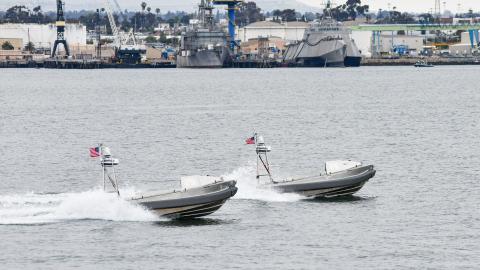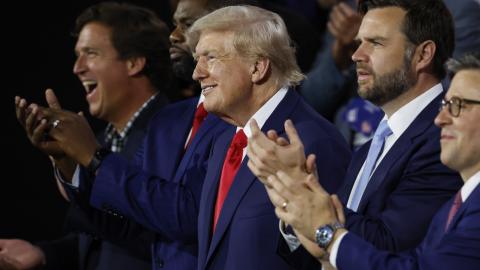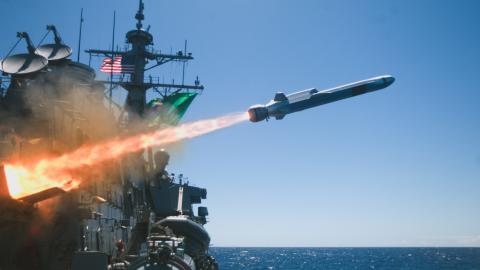Below Senior Fellow Can Kasapoğlu offers a military situation report about the war in Ukraine.
Executive Summary
• The future of US support: President Donald Trump said he is interested in a deal to provide Ukraine further military assistance in exchange for Ukrainian rare earth minerals and critical resources. Ukrainian President Volodymyr Zelenskyy expressed a positive initial response to this proposal.
• Drone warfare update: Russia conducted a record number of Shahed drone strikes in January, though Ukrainian air defenses intercepted a significant number of these munitions.
• Battlefield update: The Russian military maintained an offensive posture in the Pokrovsk theater and other flashpoints. Ukraine’s defensive is in deeper trouble following significant losses in Velyka Novosilka and Kurakhove.
• Ukraine’s operational and doctrinal shift: The Ukrainian military gave an update on its battlefield priorities and indicated a shift in its doctrinal order of battle.
1. Ukraine’s Critical Mineral Resources Could Contribute to Battlefield Success
President Donald Trump said he is interested in a deal to provide Ukraine further military assistance in exchange for rare earth minerals and other critical resources. The president’s remarks may be a roadmap for Ukraine to increase its military capacity while providing the United States with geopolitically important resources. A substantial amount of Ukraine’s rare earth riches lie in Russian-occupied territory. But Kyiv-controlled territories still hold valuable resources.
Ukraine is one of the world’s largest potential sources of rare-earth deposits (see map here via the Ukrainian Geological Survey). It has many substances on the US Geological Survey’s list of critical minerals, including beryllium (aerospace, military, and nuclear applications), lithium (batteries, glass, and ceramics), and gallium (semiconductors). The country also has reserves of titanium, manganese, graphite, zirconium, nickel, apatite, and fluorite. With 20,000 deposits of 117 distinct minerals, the country could provide 5 percent of the world’s rare earths.
Ukraine was mining only 15 percent of these mineral deposits prior to the Russian military’s full-scale invasion in 2022. Of particular importance, Ukraine has the largest titanium resources in Europe, 7 percent of the earth’s titanium. Ukraine’s manganese and iron ore reserves are vital to its steel industry; before the invasion, the country supplied 864,637 tons of steel plates to Europe, 40 percent of the European Union’s steel plate imports in 2021.
In the last five years, the global critical minerals market has doubled in size to $320 billion. It is expected to double again in the next five years. Therefore, President Trump’s proposal, while unorthodox, could benefit both Ukraine and the US. It also aligns with Ukrainian President Volodymyr Zelenskyy’s Victory Plan, the set of principles and policies that Kyiv unveiled in October 2024. This plan offered special arrangements to Ukraine’s Western allies and included a secret annex, shared only with designated nations, on developing and investing in the nation’s critical resources.
This is why President Zelenskyy responded quickly and positively to President Trump’s idea. Washington’s unofficial proposal may set the stage for a comprehensive memorandum of understanding on Ukraine’s resources. Such planning could bring tangible economic gains and give the West additional diplomatic leverage over the Kremlin. As an incentive to speed Ukraine’s path to victory, Kyiv could also promise Washington access to the critical mineral deposits in currently occupied Ukrainian territories upon their liberation.
With many policy options on the table, President Trump’s rare-earths proposal has considerable potential.
2. Iranian Shahed Drones Continue to Threaten Ukraine
Official Ukrainian sources and independent trackers concurred that Ukrainian air defenses successfully intercepted over 1,500 Iranian-designed Shahed loitering munitions in January. Ukraine’s electronic warfare (EW) efforts managed to stop 900 more of these drones.
Seventy percent of Russia’s strikes last month consisted of Shahed drones, indicating that these loitering munitions continue to comprise the bulk of Russian long-range attacks. The Kremlin often uses its Shahed munitions to saturate Ukrainian air defenses, complicate the air picture, and pave the way for more potent projectiles to follow on, such as North Korean and Russian ballistic missiles. Moreover, thermobaric- and incendiary-warhead variants of the Shahed baseline are particularly dangerous to Ukraine.
Two other open-source indicators are of particular concern for Kyiv. First, Russia launched more than 2,500 Shahed drones last month, which suggests that the joint Russia-Iran drone plant in the Russian Republic of Tatarstan continues to produce in large numbers. Second, Russia’s drone strikes have inflicted serious damage on Ukraine’s civilian population, even under the protective umbrella of the country’s air defenses. These factors highlight the offense-dominant nature of drone warfare.
3. Battlefield Assessment
The operational tempo for both sides remained high this week. But only tactical developments took place, and there were no drastic changes in territory or overall battlefield geometry.
Against heavy EW efforts, Russian first-person-view drones controlled through fiber-optic cables continued to wreak havoc. Toretsk, Chasiv Yar, Kupiansk, and Pokrovsk remained flashpoints, with intense fighting and rising personnel and materiel losses. Ukrainian forces are fighting to maintain their positions to defend the large swaths of territory behind them.
The losses of Kurakhove and Velyka Novosilka have made Ukraine’s defense of Pokrovsk even more challenging. The Russian offensive there has massed along the T0504 Highway, which stretches from Pokrovsk to occupied Bakhmut.
Long-range exchanges also continued behind the front lines. On February 5 Ukraine hit an oil refinery in Krasnodar, damaging Russia’s energy production infrastructure. On February 3 Ukrainian drones pounded Volgograd, which is home to a Lukoil refinery. And on February 4 a Russian missile hit a residential area in Izium, a city in Kharkiv Oblast, killing several Ukrainian civilians, including children.
Alarmingly, the Russian military has begun executing Ukrainian prisoners of war at an unprecedented rate, which constitutes a war crime. And declassified military intelligence from the United Kingdom indicated that the Russian high command has been sending wounded servicemen back to the front lines without proper medical treatment.
4. Ukrainian Command Updates
General Oleksandr Syrskyi, the commander in chief of the Armed Forces of Ukraine, posted an overview of Ukraine’s current military strategy on social media. As the war has begun to favor the Russian invasion, his post offered critical insights to defense intelligence analysts. Syrskyi identified Ukraine’s battlefield priorities: (1) continuing its operation in Russia’s Kursk Oblast, (2) striking military facilities in Russian territory, (3) maintaining the stability of its defensive lines, and (4) preventing further Russian pushes into Ukraine. General Syrskyi emphasized the importance of robotic warfare assets and made deliberate mention of the Ukrainian Unmanned Systems Command. The general’s assessment gave an honest glimpse of how Kyiv sees the conflict and conveyed that February would likely be a difficult month for Ukrainian fighters.
The Ukrainian Army also indicated that it is shifting its doctrinal order of battle to field predominantly NATO-style corps units. This change would make the corps the main operational-level combat formations for the Ukrainian military, with brigades serving as direct tactical subordinates. This corps-and-brigade system brings Kyiv flexibility for multi-brigade synchronized operations and increases its options on the battlefield.
In military theory, a corps-based structure is designed to equip frontline commanders and forward command and control (C2) hubs with greater freedom of movement so high command does not need to micromanage the battlefield. But in practice the shift to a corps-based structure may bring challenges for the Ukrainian Army, which employs both Soviet-era and NATO-trained personnel. Moreover, a corps maintains its own electronic warfare, air defense, fire support, engineering, and mechanized brigades. It remains to be seen whether Kyiv can effectively organize these corps. This report will track how the higher echelons of the Ukrainian military respond to this significant change.



















